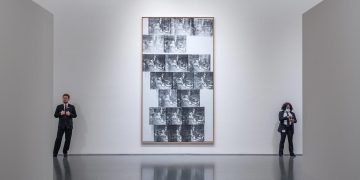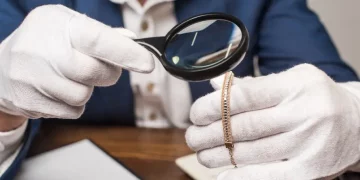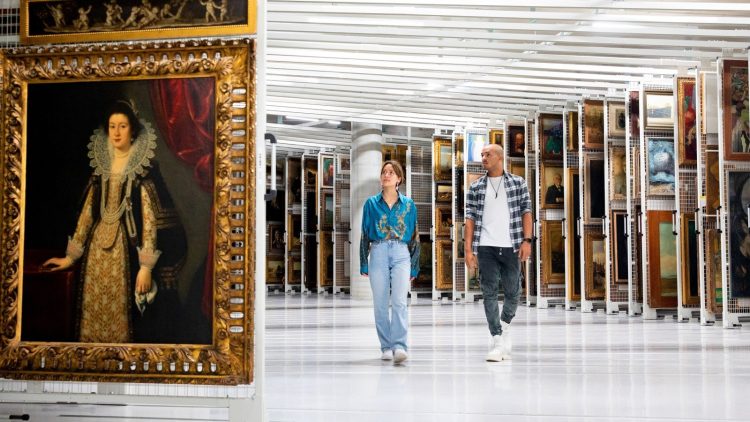In recent years, museums across the globe have begun to quietly sell parts of their collections. This practice, known as deaccessioning, has ignited debates within the art world, the public, and the philanthropic communities. Museums, historically seen as guardians of culture and history, have begun to make controversial decisions to sell works that were once thought to be permanent fixtures in their holdings. While the reasons for deaccessioning are varied, the impact of these decisions is profound, both on the future of museums and the world of collectors and investors.
This article will explore the growing trend of institutional deaccessioning, investigating the factors that are driving museums to sell parts of their collections. It will also examine the impact of this practice on the art market and trace the flow of once-public items into private hands. We will look at the ethical dilemmas museums face, the financial pressures they are under, and the consequences of selling historically significant works of art. Finally, we will explore where these objects end up, and how their sale is reshaping the landscape of art collecting and museum ownership.
Understanding Deaccessioning: What Is It and Why Does It Happen?
Deaccessioning refers to the process by which a museum or other cultural institution removes an object from its permanent collection, with the intent of selling, discarding, or repurposing it. The practice is not new—museums have been deaccessioning objects for decades, if not centuries. However, in recent years, there has been an uptick in the number of deaccessions, with many high-profile institutions opting to sell significant works of art and other historical artifacts.
The reasons for deaccessioning vary widely, but they generally fall into a few key categories:
- Financial Strain: One of the most common reasons for deaccessioning is financial need. Museums often face significant financial pressures, particularly in the wake of economic downturns, reduced funding, or unexpected expenses. The COVID-19 pandemic, for example, caused widespread closures and financial hardships for cultural institutions around the world, leading some to make the difficult decision to sell objects in their collections to raise money.
- Shifting Priorities: Museums frequently reassess their collections to ensure that the objects they hold align with their mission and institutional focus. This process may involve deaccessioning works that no longer fit within the institution’s evolving curatorial vision. For example, a museum may decide to focus on contemporary art and choose to sell its collection of antiquities or 19th-century paintings.
- Duplicate Items: Museums occasionally acquire multiple versions of the same object, often through donations or acquisitions. If an institution determines that it has excess inventory or that some objects do not contribute significantly to its mission, it may choose to deaccession the surplus items.
- Restoration and Preservation Costs: Some objects in a museum’s collection require significant restoration or conservation work. If the cost of maintaining an item outweighs its perceived value, a museum may choose to deaccession the piece to allocate resources elsewhere.
- Ethical Considerations: Some museums are rethinking the cultural significance of certain objects in their collections. Items that were once acquired under questionable circumstances, such as objects taken during colonial periods or objects from historically marginalized communities, may be deaccessioned as part of an effort to correct past wrongs and address issues of repatriation.
The Ethical Dilemmas of Deaccessioning
While deaccessioning may be a practical decision for museums in financial distress or with evolving priorities, the practice is fraught with ethical considerations. Museums are institutions entrusted with preserving cultural heritage, and their decisions to sell or remove objects from their collections often draw criticism from the public, scholars, and the broader art community.
- Cultural and Historical Significance: Many of the items in museum collections are historically and culturally significant. These objects are not just valuable because of their artistic worth; they also hold meaning for future generations. When a museum decides to sell an item, it raises the question of whether these objects are best suited for public display or private ownership. Once an object is sold, it may disappear from public view, leaving only a memory of its existence. This has raised concerns about the privatization of cultural heritage and the potential for important works to be locked away in private collections, never to be seen by the public again.
- Transparency and Accountability: Critics argue that some museums deaccession items without enough transparency, leading to concerns about the true motivations behind the sales. Without clear communication about why objects are being sold and how the funds will be used, some believe that deaccessioning can be seen as an opportunistic move rather than a necessary one. Questions about who benefits from the sale—whether it’s the museum itself, private collectors, or auction houses—often remain unanswered.
- Reputation Risk: Museums that sell parts of their collections may face a backlash from donors, who may have provided artworks and artifacts with the understanding that they would remain in the institution’s collection permanently. The practice of deaccessioning raises questions about the ethicality of removing items from public trust and whether museums are fulfilling their fiduciary responsibilities to the public.
- The Role of Donors: Some museum donors feel betrayed when objects they have donated to an institution are later sold. Many donors provide artworks to museums with the understanding that these pieces will be preserved for the benefit of the public. When a museum deaccessions these objects, it can strain relationships with future donors who may be hesitant to donate works that could one day be sold.

The Flow of Formerly Public Items: Where Do They Go?
Once a museum deaccessions an object, it is typically sold through one of several channels. The most common method is through auctions, but some museums may choose to sell directly to private collectors or dealers. The objects that are deaccessioned often enter the private market, where they can be bought and sold as commodities.
- Auction Houses: Major auction houses, such as Christie’s and Sotheby’s, play a significant role in the flow of deaccessioned items. These houses often handle the sale of high-value works from museum collections. When an item is sold through an auction house, it becomes available to a wide pool of potential buyers, ranging from private collectors to investors looking for high-return purchases.
- Private Collectors and Dealers: Some museum deaccessions are sold directly to private collectors or through art dealers. These transactions tend to be more discreet than auction sales and are often made for the purpose of acquiring a particular piece that fits within an established collection. The market for these items can be highly exclusive, as access to high-value works often requires personal connections or a significant financial investment.
- Global Impact: As deaccessioned items enter the private market, they may change hands multiple times, often crossing international borders. This globalization of the art market has led to the spread of formerly public cultural artifacts into private collections around the world. The shifting of objects from public museums to private ownership can raise concerns about the accessibility of cultural heritage, as well as the preservation and conservation of these pieces outside of the institutional care that museums typically provide.
- The Role of Investment: The rising trend of deaccessioning has also spurred the growth of art as an investment vehicle. Collectors and investors have recognized the potential for profit in acquiring deaccessioned items, especially those with historical significance. As a result, the market for art and collectibles has become increasingly driven by financial interests, further contributing to the commodification of cultural heritage.
The Financial Implications for Museums and Art Institutions
The decision to deaccession and sell parts of a collection can provide museums with a much-needed influx of funds. These funds can be used to support the museum’s operations, fund new acquisitions, or support educational programs. However, the practice has financial implications for the long-term sustainability of museums.
- Short-Term Relief vs. Long-Term Impact: While deaccessioning may provide short-term financial relief, it is a temporary solution to long-term funding problems. The sale of cultural assets may allow a museum to stay afloat in the short term, but it does not address the underlying financial issues that many museums face. As public funding for cultural institutions continues to decline in many parts of the world, museums may increasingly rely on private donors, corporate sponsorships, and commercial sales to fund their operations.
- Changing the Relationship Between Museums and the Art Market: The practice of deaccessioning has blurred the lines between museums as custodians of culture and the commercial art market. Museums have historically been seen as institutions dedicated to public service, preserving art and culture for the benefit of society. However, by engaging in the sale of their collections, museums are becoming more integrated into the commercial art market, leading to concerns about the ethical implications of monetizing cultural heritage.
Conclusion: A Complex and Evolving Trend
The growing trend of deaccessioning is a complex issue that raises questions about the role of museums in society, the commodification of art, and the ethical considerations involved in selling historically significant items. While deaccessioning may offer financial relief for struggling institutions, it also challenges the long-standing notion that museums are the permanent custodians of public culture.
As museums continue to grapple with financial challenges and changing priorities, the deaccessioning trend will likely continue to evolve. Whether or not this practice is a sustainable solution for museums remains to be seen, but its impact on the art market, the public’s relationship with cultural heritage, and the future of museum collections is profound. Museums must carefully consider the long-term consequences of deaccessioning and the potential loss of public trust as they navigate the difficult balance between financial necessity and cultural responsibility.

















































